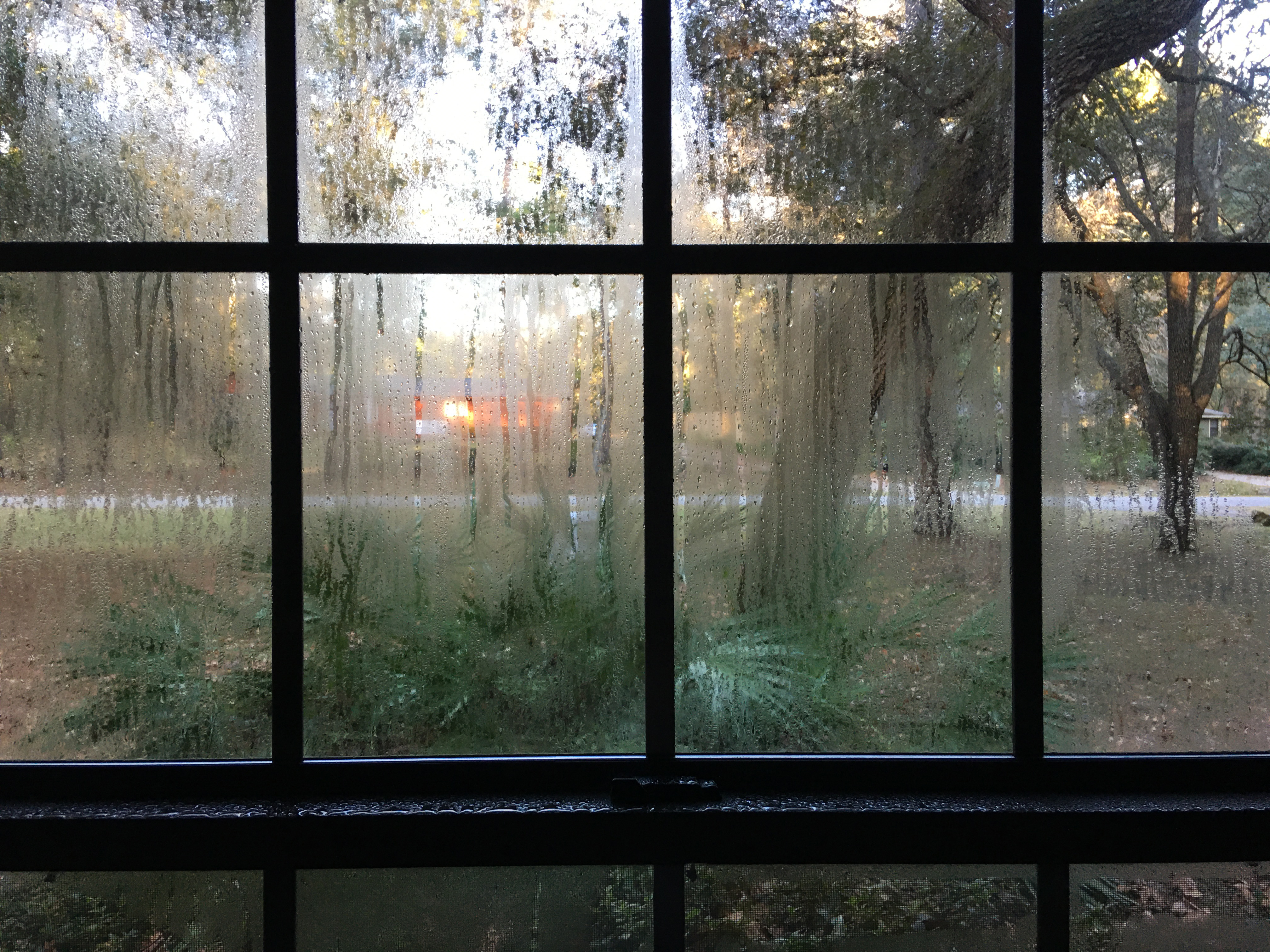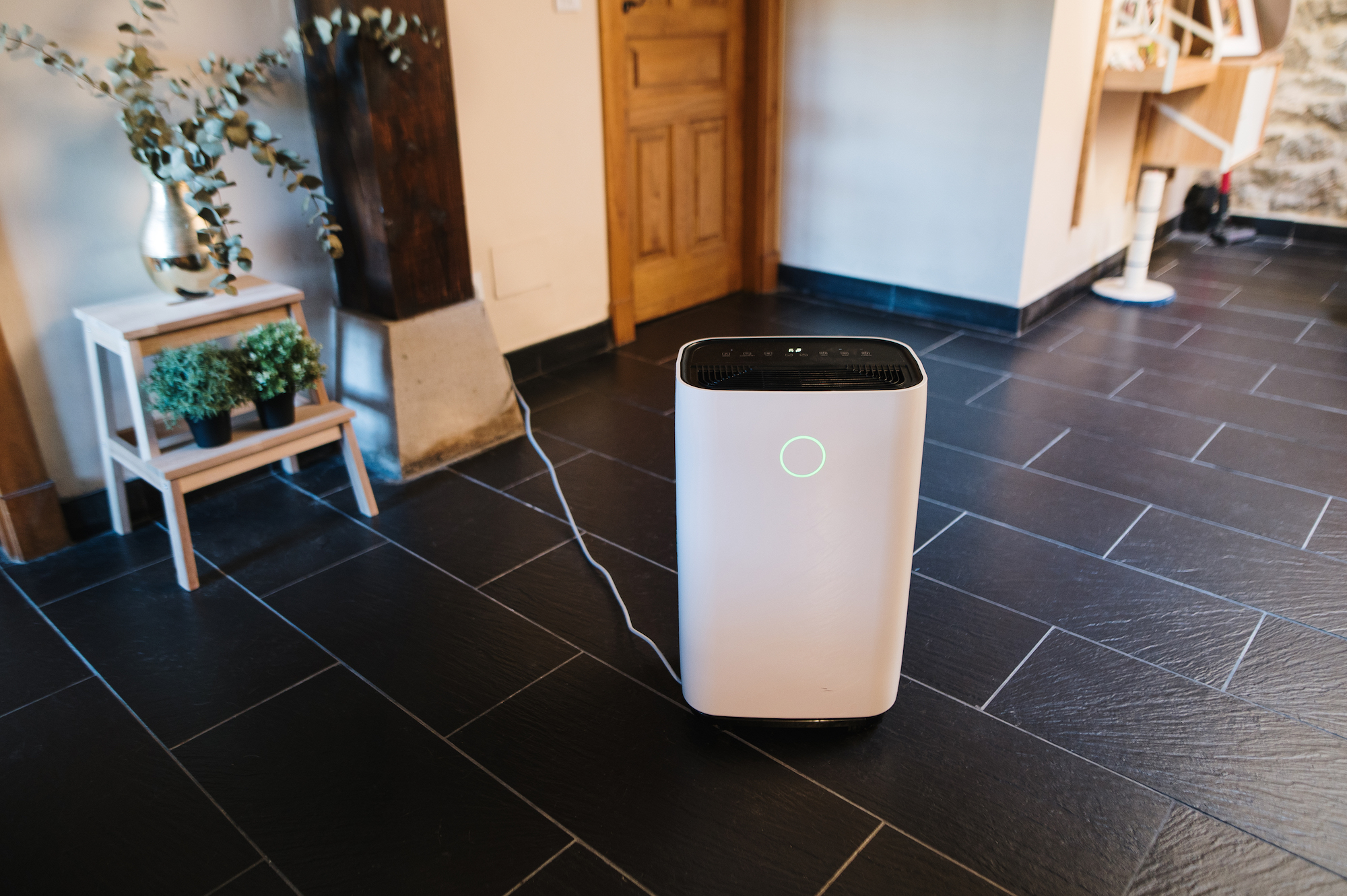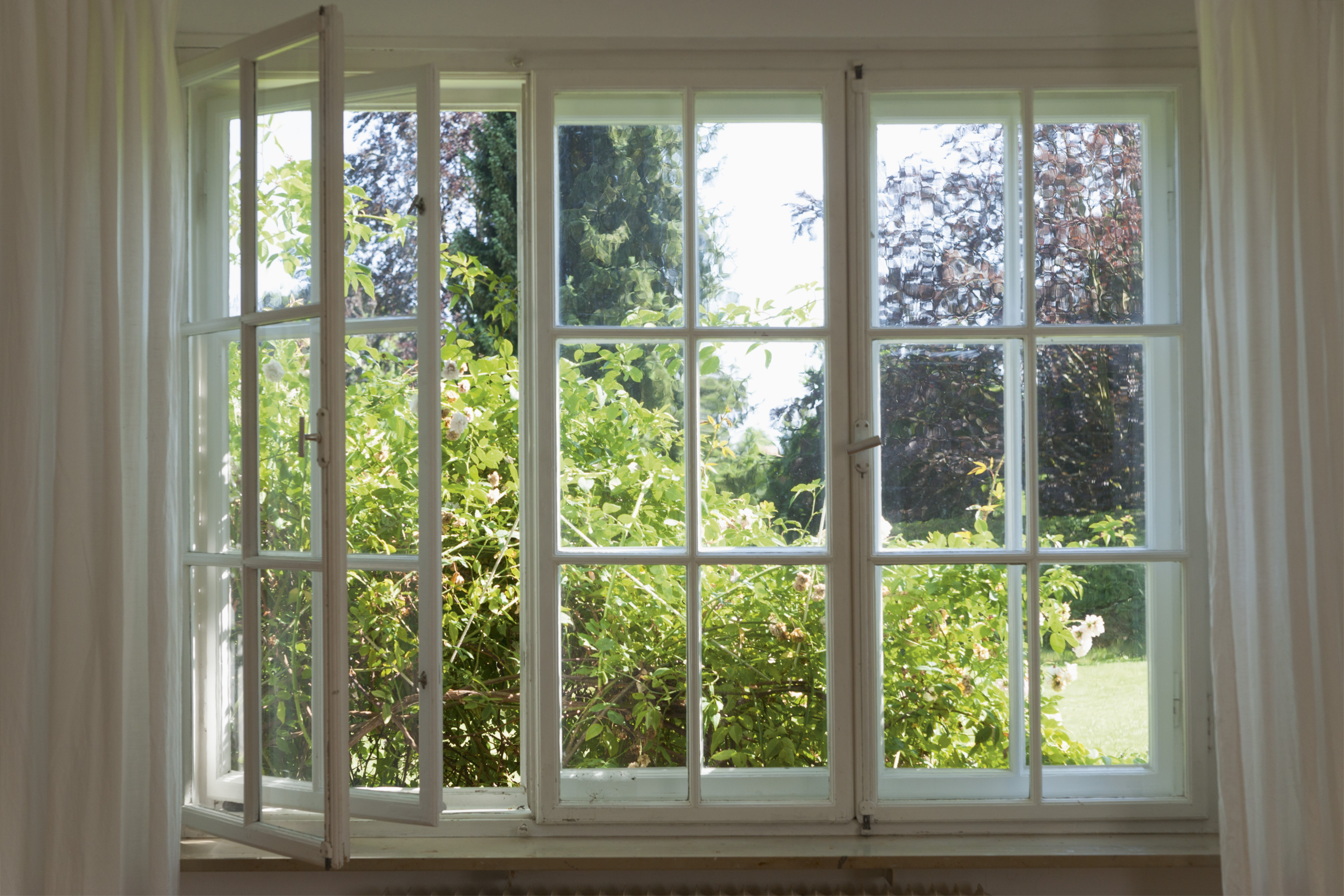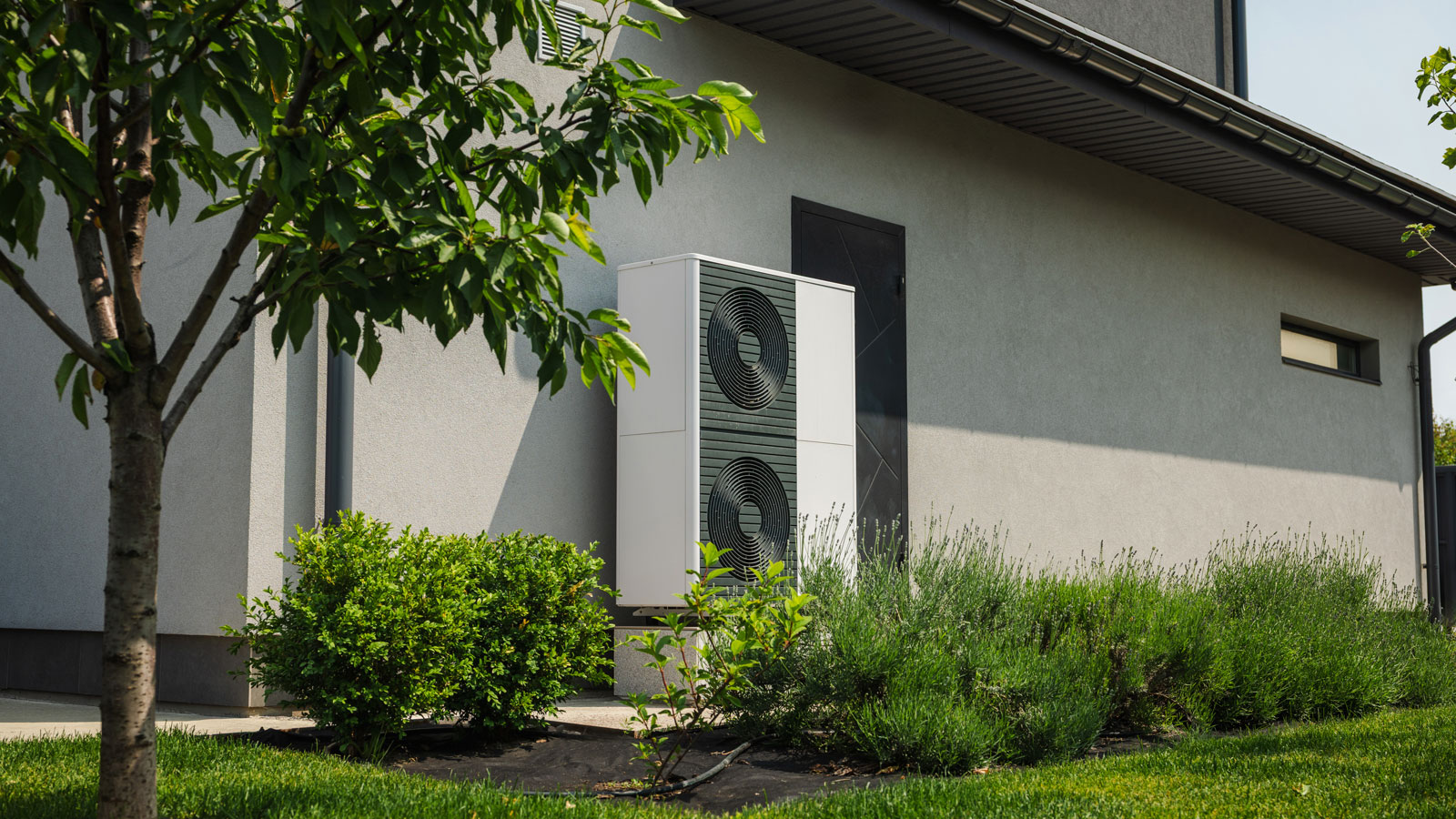How to reduce humidity in a house
Find out how to reduce humidity in a house using a dehumidifier, as well as natural solutions. Also, discover the causes and how to fix permanently

Looking at how to reduce humidity in a house is an important step if you're noticing increased condensation on windows, potential mould growth or damp.
Taking early steps to limit humidity in rooms using home ventilation or a dehumidifier will help to prevent these problems and reduce the chance of them returning.
Take a look below to find expert advice on dealing with high humidity in a home both naturally and with a dedicated machine.
How to reduce humidity in a house: Why is it important?
If humidity is high in a house it can lead to all kinds of unpleasant problems, so it's best to find out how to stop condensation, damp, or mould as soon as you spot them. This is even more important in the current climate as homeowners are choosing to hang damp washing indoors and not turn on the heating when the temperature drops.
"Over time problems such as mould growth, condensation and musty smells will become apparent, causing damage to wallpaper, carpets, furniture and windowsills," advises Chris Michael from Meaco. "If there is damp and mould in the home it's likely to contribute towards respiratory problems, respiratory infections, allergies or asthma.
"Damp and mould can also affect the immune system, especially for the young and old. There will be many people this winter who have never seen this phenomenon before who will be confused as to why this is happening all as a result of a natural reaction to the cost of living crisis where they are saving on energy bills by delaying putting on the heating. Or have switched from using a tumble dryer to air drying washing indoors.
"The big kicker come December/January will be that with extra moisture content in the air; it will actually make the home harder and more expensive to heat when the heating does go on — an ironic and unwelcome twist."
Bring your dream home to life with expert advice, how to guides and design inspiration. Sign up for our newsletter and get two free tickets to a Homebuilding & Renovating Show near you.
What causes high humidity in a house?
"The air in any house comes from the outside. If the temperature is colder in the home or space of the house, the humidity falls out, just like how dew works. This can create levels of humidity that can easily reach above 90% RH [relative humidity]," explains Joe Pesce, CMO/COO at Wood. "Warm air can progressively carry much more humidity compared to colder air. Humidity is also added by everyday activities in the house/space, cooking, showering, from plants, etc."
"During winter, as the temperature drops, households experience more damp and mould problems in their properties. In most cases, damp and mould originates from condensation forming," says Larry Soper, technical training manager at EnviroVent. "When temperatures drop the air can no longer hold as much moisture and it will migrate to the coldest parts of the house where it condenses on windows and walls.

What is a good level of humidity in a house?
"The ideal RH for a home is 55%RH. Anything above this figure means there is too much moisture in the atmosphere which could reveal itself as condensation, mould or a damp smell in the air. Humidity becomes a problem in environments with humidity above 60%RH which can cause condensation on windows during a cold day," says Chris Michael. "A relative humidity above 68%RH will cause mould to grow where it is already present on a surface. These humidity levels will be driven by what we all do in the home, drying clothes, cooking, boiling the kettle, bathing, showering and breathing."
"We recommend 50-60%," adds Joe Pesce. "Mould grows when circumstances are +7ºC and more than 72%RH. If the temperature or humidity is below these levels, mould will not grow on surfaces. Mould spores can be found in any ordinary room or house, so it is always important to have a low concentration level. The higher the temperature and humidity for a long period of time, the higher the risk of getting mould damage."
A thermo-hygrometre (like this ThermoPro product from Amazon) will help to identify humidity levels and temperature in a room.
How can I lower humidity in a house in winter and summer?
Dehumidifiers are the obvious choice for those suffering from high humidity in a house.
"Choosing to buy a dehumidifier to help remove moisture from the air is a great way to improve conditions in your home," comments Meaco's Chris Michael. "We recommend placing the dehumidifier close to the source of moisture in an area where there is good air circulation. For example, in a hallway near the bathroom and bedrooms. Or if drying wet laundry indoors, next to where you hang the items."
Chris adds: "A dehumidifier with an in-built humidistat will measure the relative humidity in the property [take a look at this Meaco product from Amazon]. If you set the target humidity to 55%RH, the dehumidifier will immediately start working hard towards reducing the humidity. When it reaches the target it will turn itself off, only switching on again if it detects an increase, helping to save energy. You should notice a marked difference – dry air instead of wet air, a warmer home because the dehumidifier removes moisture, and a better, healthier environment."
Products with a sleep timer are also a good investment, as to reduce dehumidifier running costs.
If damp has already formed, looking into specific types of prevention and identify the right way of how to treat damp in your home.
How can I lower humidity without a dehumidifier
If you're not looking to invest in a dehumidifier, there are a few options to reduce humidity, including:
- Looking into natural ventilation methods
- Dry your clothes outside on a dry day
- Open windows in kitchens and bathrooms after being in use
- Have your extractor fans in the kitchen and bathrooms turned on when in use
- Reduce the temperature of your shower
- Use a fan to increase air circulation
What lowers humidity naturally?
"A relatively cost-effective method of cooling down the room is to think about making use of plants within your conservatory [or household]. Potted or hanging plants can make a big impact, and can really help in keeping humidity down and taking the edge off on especially hot days," says Gian-Carlo Grossi, managing director at Roofing Megastore.
Some house plants are better than others at reducing humidity (some actually increase the water in the air, so be careful about which you choose).
Does opening windows reduce humidity?
Opening windows is a good way to reduce humidity in a room and while it is not the most effective method, the window only needs to be open a small amount to make a difference.
Prioritise windows on the side of the house which suffers most of high humidity levels, such as the kitchen and bathroom.

How do you permanently remove humidity?
It's tricky to bid farewell to high humidity in an existing house completely without taking on some home improvement. Repair any leaks you find and install powerful extractor fans in the kitchen and bathrooms as a first step.
"The right ventilation unit in a property would either extract moisture at source or dilute, displace and replace moisture-laden air, using fresh filtered air from the outside," EnviroVent's Larry Soper suggests.
"This would control the humidity levels, so that condensation, mould and other indoor contaminants are significantly reduced. This ranges from single room ventilation units to whole house systems, such as PIV (Positive Input Ventilation) and MVHR (Mechanical Ventilation with Heat Recovery)."
For more short-term solutions, Chris Michael from Meaco advises:
"Reduce moisture vapour from household activity
Many everyday tasks create moisture, often without us noticing. By putting lids on saucepans when boiling or steaming vegetables and using an extractor fan briefly or opening a window when using the bath or shower, homeowners can reduce moisture vapour in the air.
"Make air drying indoors efficient
Drying clothes inside is gentler on fabrics than tossing and tumbling in a dryer and prevents static cling. Before you take them out of the washing machine use a rinse cycle to reduce the amount of water left in the clothes to a minimum. Place a drying rack away from walls to prevent the moisture from being trapped. Hang items individually and with as much space in between them as possible so they will dry more quickly. Open windows to enable airflow.
"Warm up your house without central heating
Making the most of any natural sunlight can help to warm houses and dry out any damp air. Opening curtains and blinds in the day prevents moisture from being trapped around the windows and using rugs and mats on wooden and stone floors can make rooms feel warmer too. If you haven’t already, consider investing in double glazing as it helps your property retain the heat from the sun during the day.
"Simple changes inside and outside the home
Encouraging air flow and removing opportunities for damp to spread reduces damage or removes opportunities for mould to form. Opening doors of built-in wardrobes that sit on outside walls and trying to keep furniture, clothes and shoes from touching outside walls can stop damp developing. Keeping gutters clear also decreases the amount of water that may spill down external walls, which could contribute to moisture in the home."
Amy is an interiors and renovation journalist. She is the former Assistant Editor of Homebuilding & Renovating, where she worked between 2018 and 2023. She has also been an editor for Independent Advisor, where she looked after homes content, including topics such as solar panels.
She has an interest in sustainable building methods and always has her eye on the latest design ideas. Amy has also interviewed countless self builders, renovators and extenders about their experiences.
She has renovated a mid-century home, together with her partner, on a DIY basis, undertaking tasks from fitting a kitchen to laying flooring. She is currently embarking on an energy-efficient overhaul of a 1800s cottage in Somerset.

